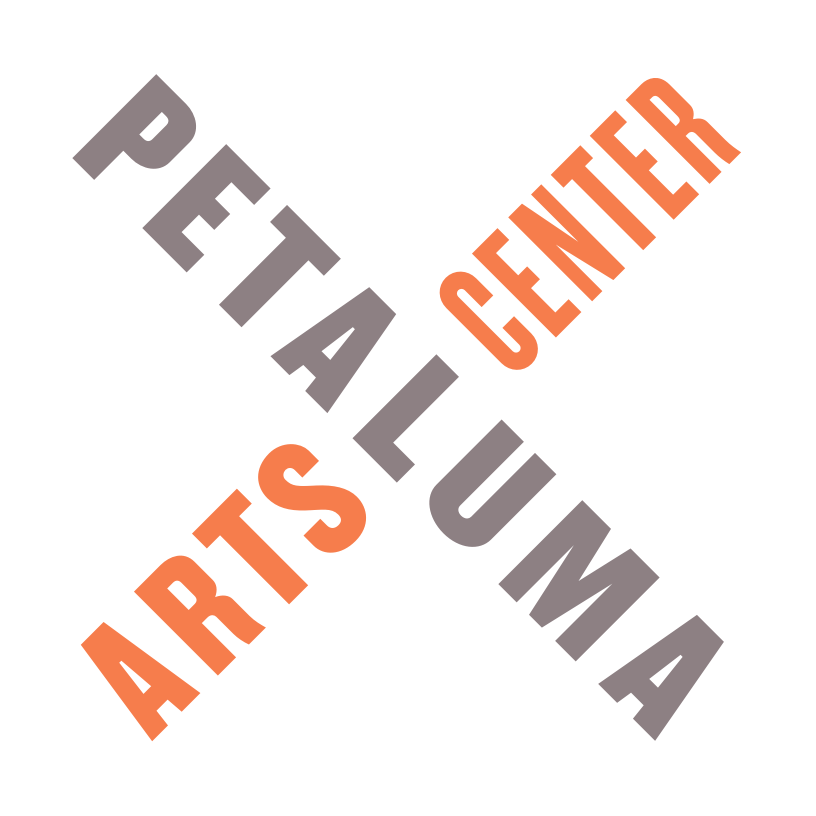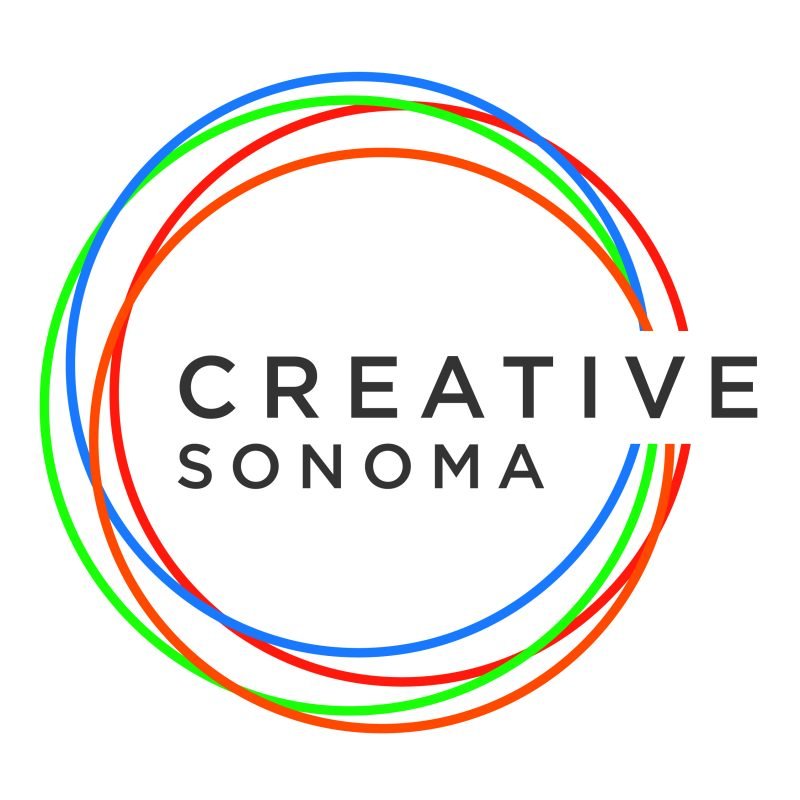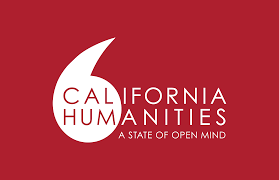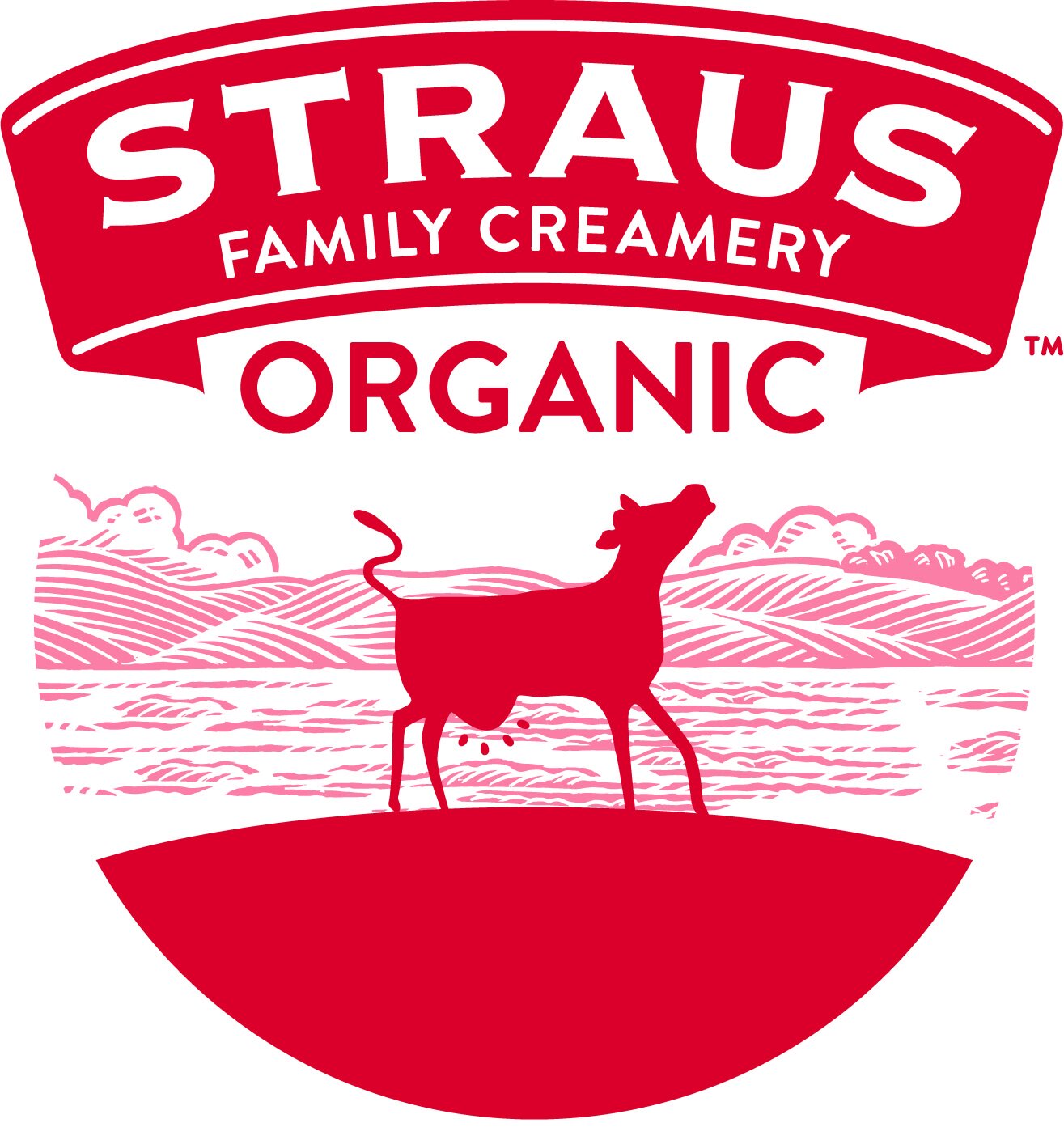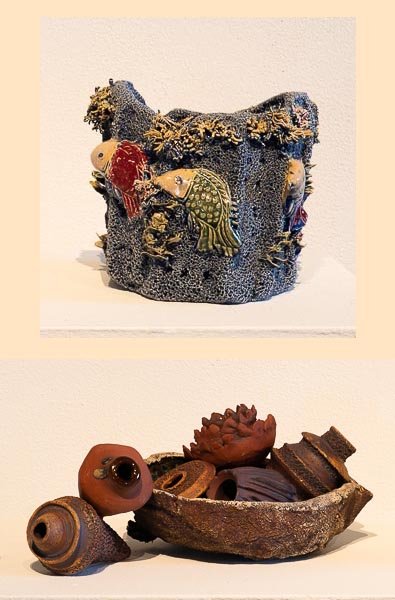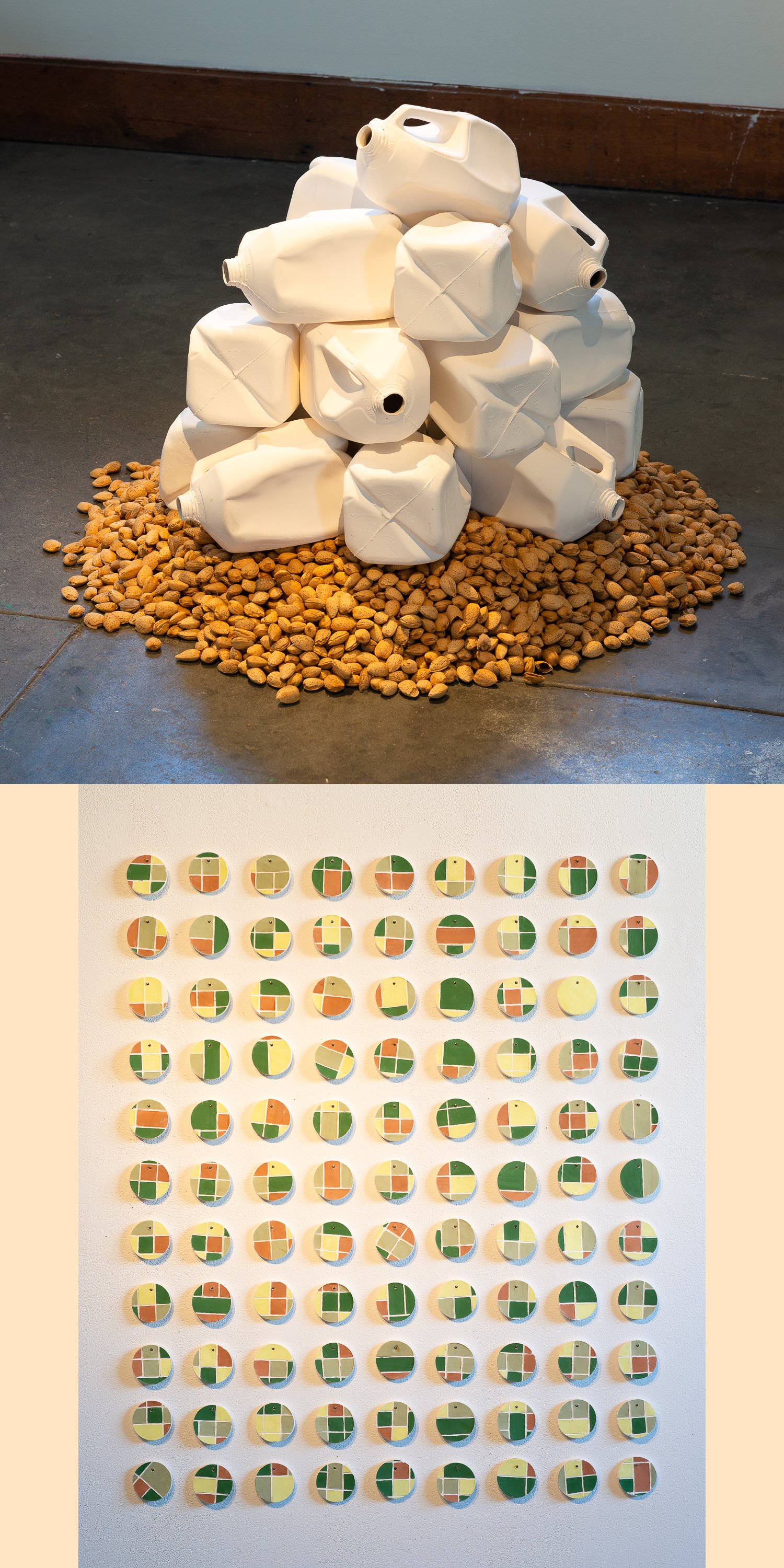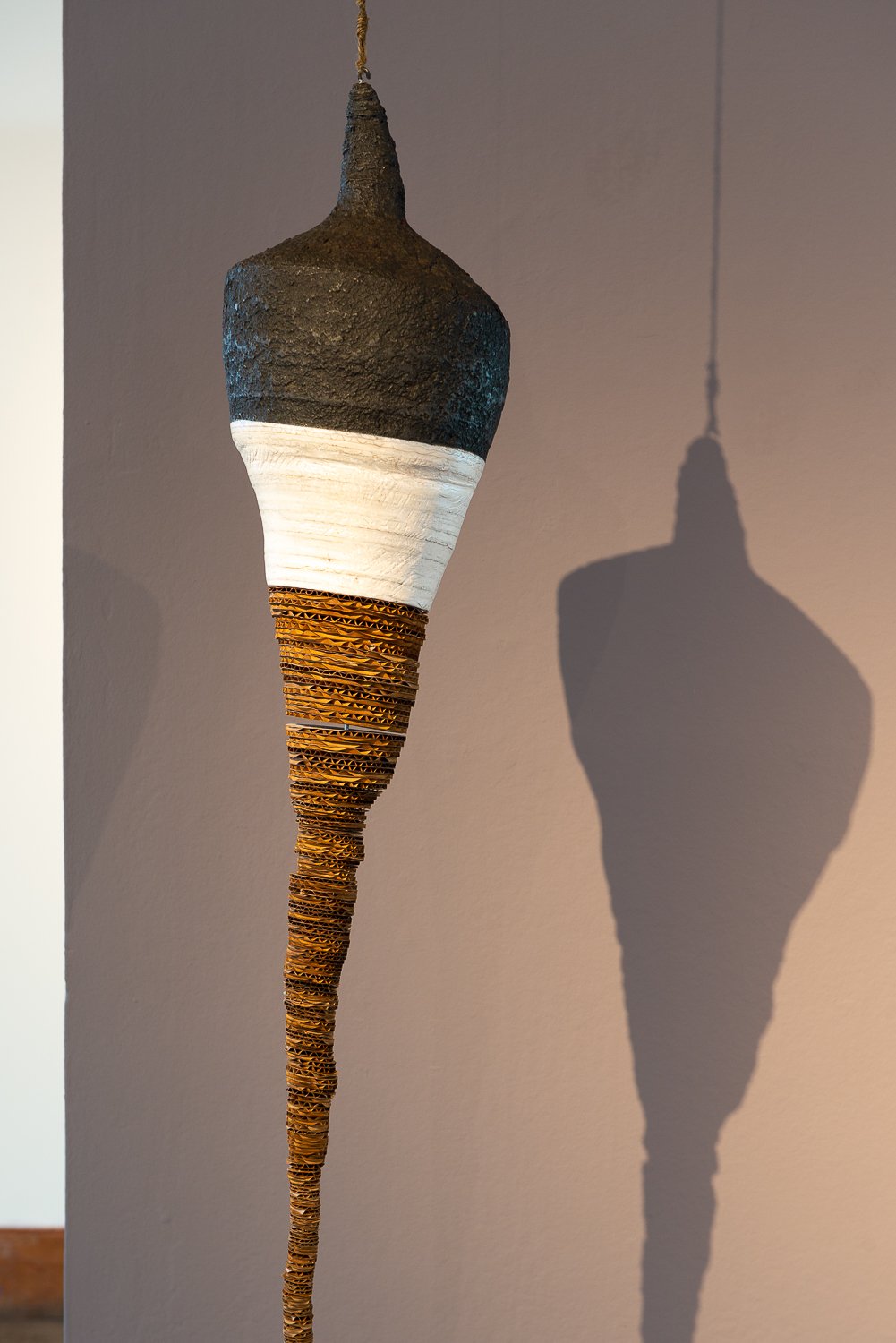Agri-CULTURED: Reflections on our Local Food Community by Land and by Hand
“Planting” by Terrance Murphy
August 11- September 24, 2022
"Tell me what you eat and I'll tell you what you are" Brillat-Savarin
Agri-CULTURED explores cross-cultural intersections of food and farming in our region. The project brings together food producers, purveyors, and artists who work locally and align with global concerns of sustainable practice and cultural memory. It not only bridges art, science, and agriculture but also engages the spheres of hospitality, tourism, and the economy of Sonoma County.
Writing Juror: Elizabeth Carothers Herron, Poet Laureate of Sonoma County
Elizabeth Carothers Herron's work includes Insistent Grace (Fernwood Press, 2020) and a collection centered on the ramifications of climate change (Fernwood, 2022). A four-time Pushcart Prize nominee, Herron is published in West Marin Review, Canary, The Ecological Citizen, Free State Review, Parabola and the Center for Humans and Nature. She was shortlisted for the Anhinga-Robert Dana prize and the annual Comstock Prize in poetry. As Poet Laureate she has begun the Being Brave Poetry Project.
And the winners are:
First Place: "Mochi Tsuki" - Jodi L. Hottel
Second Place: "The Dante Box" - Helen Heal
Third Place: "Ode to BLT" - Steve Trenam
Honorable Mention: "Cafeteria Cuisine" - S. Simon Corwin
Honorable Mention: "Fog Valley — the Tastiest Little Place on Earth" - Francis Rivetti
Art Jurors: Carin Jacobs and Betty Teller
Carin Jacobs is Petaluma Arts Center’s Executive Director. She has taught graduate seminars in both Museum Studies and Food Studies and holds an M.A. in Museum Studies from John F. Kennedy University. Her curatorial work includes An Archaeology of the Senses and her work has centered on place-based content creation and storytelling.
Betty Teller has more than 30 years experience as an exhibition developer, including Founding Exhibitions Director, COPIA, and Assistant Director for Exhibitions, SITES, Smithsonian Institution. She has an M.A. in American Studies/Museum Studies from The George Washington University and for 16 years wrote a bi-weekly food column for the Napa Valley Register.
This project was made possible with support from California Humanities, a non-profit partner of the National Endowment for the Humanities, from Creative Sonoma and from Straus Family Creamery. Special thanks to Foundry Wharf, Jupiter Foods and Petaluma Bounty.
Special thanks to Foundry Wharf, Jupiter Foods, Petaluma Bounty and The Lexicon
CADE BURKHAMMER
CADE BURKHAMMER
Cade Burkhammer is a painter, writer, and drummer living in Santa Rosa. He has exhibited all over the U.S. since the 1980’s. Cade works in his own Narrative-Surrealist, Expressionist-Photorealism styles. He is the creator of The Wise Fool Tarot.
A family tends to farm chores. A year or a day later, the farm is sold. A developer quickly drops houses on the property from luxury jets. Reality becomes less sustainable with the continuation of project-housing replacing farms.
SHIREEN DONALDSON
SHIREEN DONALDSON
Shireen Donaldson is a ceramic artist from Australia who moved in 2003 to Sonoma County with her husband and three daughters. She is self-taught in that she received no formal art qualifications, only a passion for clay since high school. Shireen uses both wheel and hand building and loves to spend time with her fellow artists at a local open studio.
Lost Coral—An increase in sea temperatures, rising sea levels, and more frequent and severe storms are some of the effects of climate change that can negatively impact coral reefs. This ceramic sculpture reminds us that coral reefs not only act as a home for multiple fish species, but they also protect coastlines from storms and provide food and resources across the globe.
Seeds of Nature—This ceramic sculpture depicts a collection of forest seeds and a coastline shell that celebrate Sonoma County as a natural destination for forest and coastal beauty. It captures the ancient practice of foraging, collecting wild-grown ingredients for use as food, medicine and artistic inspiration.
VEVA EDELSON
VEVA EDELSON
Veva J. Edelson, a San Francisco native, received an MFA from Mills college and has exhibited in the Bay Area. She currently lives and works on a small farm in Sonoma County where she has a studio and stewards the ecosystem of a climate beneficial farm with her husband. Farming has inspired and informed her visual art. She works within a fertile practice that identifies the subtle space between knowing and questioning. Many of the processes in her practice involve slowing down, being present and repeating simple actions over time.
My work is informed by living and working on a farm in the Dairy Belt. Part of my practice is witnessing the environment and the changes in climate. Untitled is a set of hand built porcelain rectangular forms; the surfaces, dotted by hand, layered with color, observe the landscape where I live and work reflecting the color combinations that occur seasonally. I see that we are at the threshold of a new geologic era. I question our relationship to ourselves and nature. I connect with the land, refer back to the land, and advocate for the land.
CAROLE FLAHERTY
CAROLE FLAHERTY
Carole is an apple farmer, Sebastopol horticulturalist and artist currently working in fiber arts. As a weaver and fiber sculptor, she studied at College of Marin with Carole Beadle.
In Celebration of Diversity in Agriculture—I got inspired to make this tree about diversification in agriculture as I got more educated about the local apple, grape and cannabis industry and the necessity to have a variety of crops. The leaves on this tree are made with sewing thread, the grapes and apples from wool, the trunk from apple prunings and grape vines, the canopy is a single branch off a Gravenstein apple tree planted around 1915
DOUGLAS GAYETON
DOUGLAS GAYETON
Co-founder of The Lexicon, Gayeton directed Know Your Food for PBS and authored two books, SLOW: Life in a Tuscan Town, and LOCAL: The New Face of Food and Farming in America. Curators have hosted thousands of pop-up exhibits featuring his information artworks and his work is held in public and private collections around the world.
Gayeton uses evidence-based storytelling to help people pay closer attention to how they eat, what they buy, and where their responsibility begins for creating a healthier, safer food system.
JULI LEDERHAUS
JULI LEDERHAUS
Originally from San Francisco, I have lived all over this beautiful country, including Alaska and New England. I am also a teaching chef, and enjoy expressing artistry through the food I cook.
Painted plein air at Green String Farm, this painting represents the connection within our local economy of farming for food and the environment. Much is returned to the earth, enriching the soil and biodiversity of the land while blessing Petaluma with abundant and delicious produce.
LISA LIGHTMAN
LISA LIGHTMAN
I started to make art in the mid-1980s while pursuing a separate professional career. I’ve maintained a steady art practice that embraced recognizable imagery and abstraction. I have a strong fondness for collage, bold color and expressionist mark-making. I create art that generates, for me, a feeling of curiosity and wonder, not unlike life itself.
For various reasons, be it economic, climate uncertainty, labor costs or the changing conditions of how farming is done, the family farm is dramatically decreasing in numbers. The economic viability of small scale food production is reflected by a creative and community based response—CSAs, farm membership, farmers markets—which are strongly embraced and thriving in Sonoma County. But this is less true in most communities across the country. This collage reflects fields and the farmhouse and shifts to a larger black space of being no longer.
EMMA LOGAN
EMMA LOGAN
Emma Logan is an artist and educator based in Sonoma County, CA. She combines a research and process driven practice with organic mediums like clay, wool, and paper to make sculpture and installation work centering issues of geographic identity, land use and access, sensory memory, and our relationships with food.
Nuts About Milk is a question to the viewer about how we assign rights to water resources in California, how popular culture impacts those choices, and how our purchases influence agricultural practices. I hope to start conversations about the interconnectedness of personal decisions and environmental impact related to land use.
Land Grab is a work exploring the ownership of land, specifically land used in California for agricultural purposes. Geographic identity, nostalgia, and the culture of “manifest destiny” cross with issues of water rights, human rights, and the push for sustainable agriculture.
ROBERT McFARLAND
ROBERT McFARLAND
During the first ten years of the 27 years I’ve developed the art and craft of photography, I was awarded 1st place Best of Show awards nationally, at the California State Fair, in the Bay Area, and Sonoma and Marin Counties. I’ve been on Art Trails for the past 16 years.
Strawberry pickers along Hwy. 1 just south of Monterey are paid by the weight of the strawberries they pick. It’s hard to watch. They have baskets about 30” in diameter, 6” deep that they fill. Stooped over on the ground, they pick them one by one and when their basket is full enough, they get up and run to the truck behind, stand in line if there is one, get their baskets weighed, and return to pick some more.
SANDRA McHENRY
SANDRA McHENRY
As an artist and farmer, my small farm is often the inspiration for drawings and artworks. My art practice swings with the seasons and the years. Strong feelings that the typical food available for most lacks taste and nutrition motivates me to grow organic produce for friends, family and for the local food bank. This allows me to give back and increase connectedness in the circle of community. Consider the farm as part of my art.
My art is inspired by the sculptural forms I see in the garden, but moves deeper with more layered meanings. I begin by seeing, gathering and recycling materials: with this work, cardboard from a big box store. The materials I am drawn to have usually had a previous life and I see their ability to undergo a transition.
Chrysalis, vessel, or root, each layer within the piece is a moment of time rooted in the complexities of life. The first experience is blackness, the black into white, the white into the new start, the root burrowing down for sustenance and growth.
TERRY MURPHY
TERRY MURPHY
First, my mom started bringing home paint-by-numbers kits when I was eight or ten. Then it was endless hours drawing Baltimore sports heroes. Then, many college hours studying Andrew Wyeth’s work, never entertaining the thought of actually being an artist. Discovering Willem DeKooning and later, Diebenkorn and the Bay Area boys made me realize I didn’t have to be a Wyeth. The move to Petaluma has, in a way, brought me full circle, continuing some old aerial references along with some emphasis on figures in motion: athletes and workers in the landscape bringing energy and narrative.
Food, our most basic human requirement, today is the subject of so much fascination, technological innovation and even cultural obsession. I think it’s important to recognize and honor the most simple, fundamental, basic aspects of food and the agriculture that produces it, especially in a time where we in the “1st world” have come to industrialize it and take it for granted.
KAREN PREUSS
KAREN PREUSS
My passion for photography began with my awareness of the FSA photography project, and the plight of farmers and workers during the Dustbowl years. I’m a location photographer specializing in local farming, healthy food and sustainability. I care about people and hope to use photography to explore social justice issues and create positive social change.
Stoop Labor—The struggle for better pay and working conditions started by Cesar Chavez in the 60’s is still ongoing today and his ideas are as relevant as they were at the start of the movement. Windfall apples are used mainly for vinegar, animal feed and compost.
MICHAEL RILEY
MICHAEL RILEY
Well worn, substantially traveled photographer, with interest in interpreting subjects via composition and digital adjustment. Resident (mainly) of North Bay area. Member of a large, extended family, populated by a collection of artists, wildlife biologists, singers. entrepreneurs and corporate toilers, extended over several continents.
Fruit Stand is a depiction of how our food purchasing has adapted to the pandemic economy.
ANNA M SIMSON
ANNA M SIMSON
Anna M. Simson received an MFA in Painting from the California College of the Arts in San Francisco in 2009 and a BA in Art Practice from UC Berkeley in 1998. Her work has been exhibited internationally in Mexico and Peru and widely in the Bay Area.
You Can Only See the Dark When You’re No Longer In It is part of a series of paintings and drawings that I made about the intersection of poverty and food. It also has roots in surrealism, with the addition of sleeping raccoons in the over-stuffed fridge. In my observation, food in a person’s fridge is a reflection of social class. On the surface, someone may seem to have enough to eat. But upon closer examination, the food may be expired, rotten, poor quality, but kept anyway to keep the illusion of abundance. I also saw the endless fridge with raccoons as a metaphor for dark places in life, situations that can only be truly understood once one is no longer immersed.
VIVIEN STRAUS
VIVIEN STRAUS
Vivien is a writer/performer who grew up on her family’s ranch in Marshall. She’ll perform her new show, “After I’m Dead, You’ll Have to Feed Everyone” (about her mother Ellen Straus, co-founder of MALT), on the ranch this Fall. This “statue” was a fun pandemic project.
Ellen Straus co-founded Marin Agricultural Land Trust (MALT), the first land trust to focus solely on agricultural land. She fled Nazis, married a dairy farmer, then focused on protecting farming in her own back yard by bringing environmentalists and ranchers together, often by serving homemade pie at her kitchen table.
PATRICE WACHS
PATRICE WACHS
I recently moved to Sonoma County from Malibu after a successful career in art, graphic design, art education, and film. I paint what I love, with the intention of illuminating the everyday—a swimmer in the bay, an abandoned barn, a farmer, an old railroad station—every day is an inspiration.
Bob Cannard, visionary farmer, teacher and mentor of the sustainable food movement since the 1970’s gained recognition when he partnered with Alice Waters to provide fresh, local, seasonal produce for her Berkeley Chez Panisse restaurant. Their collaboration brought international attention to the farm to table movement. He is my hero.
